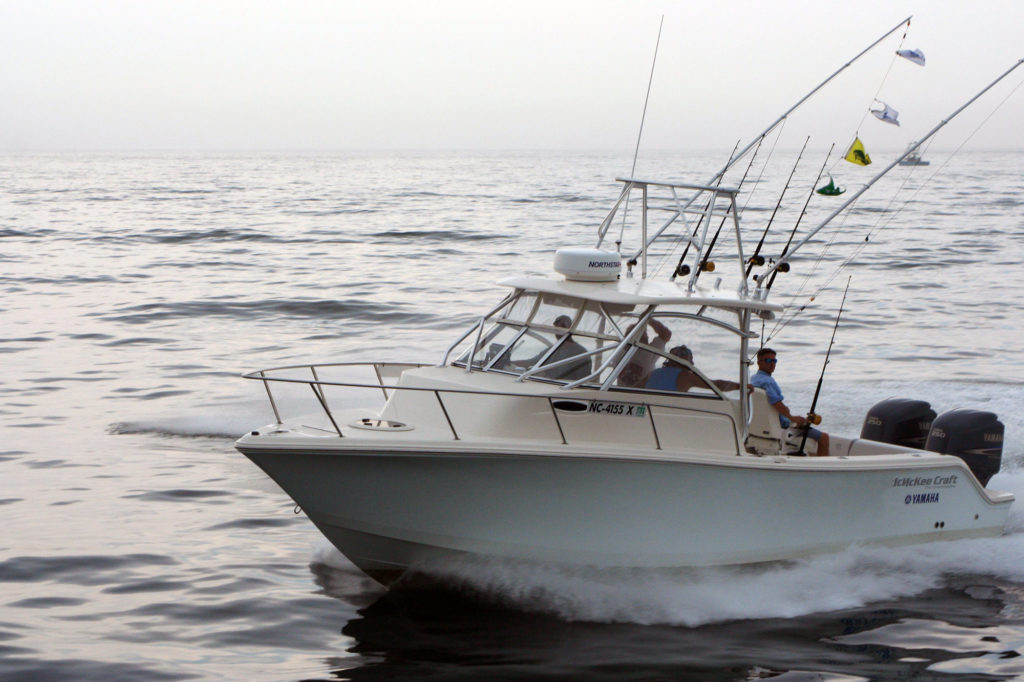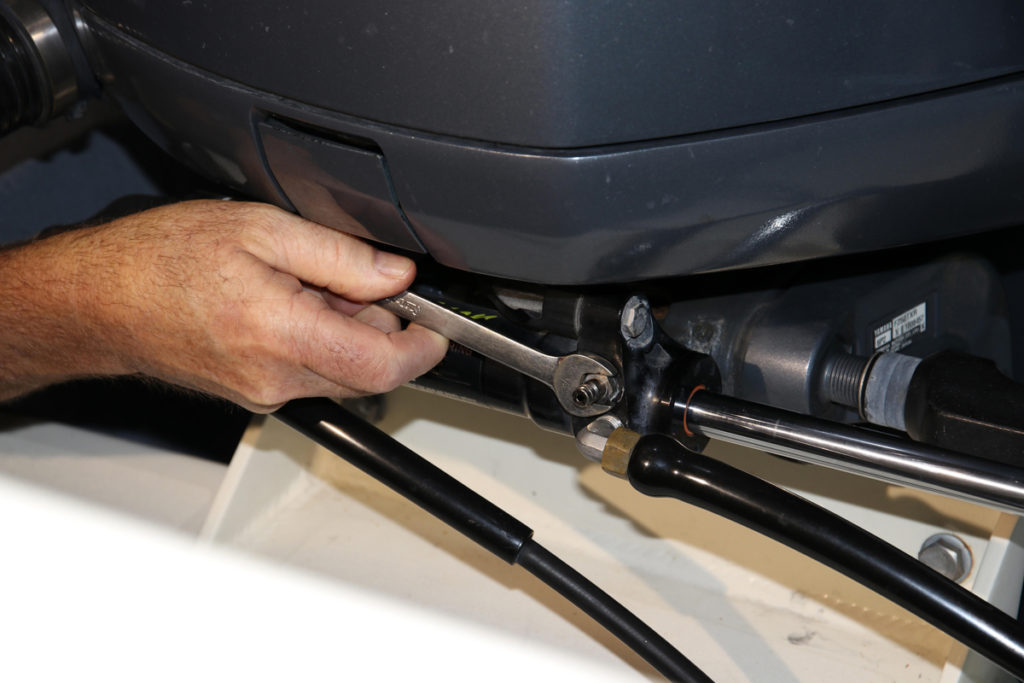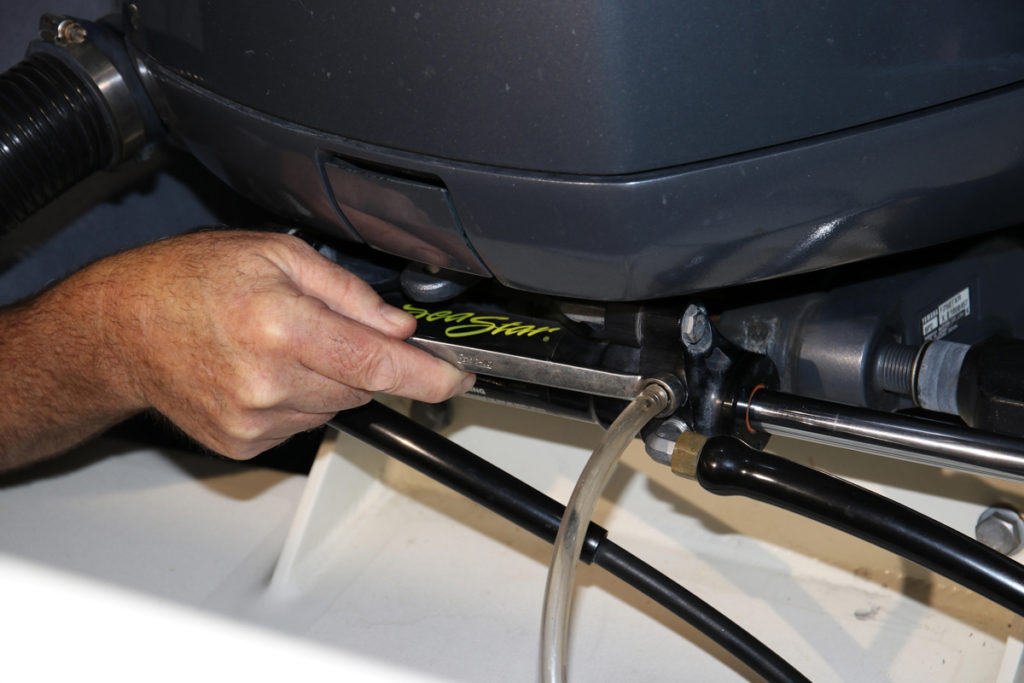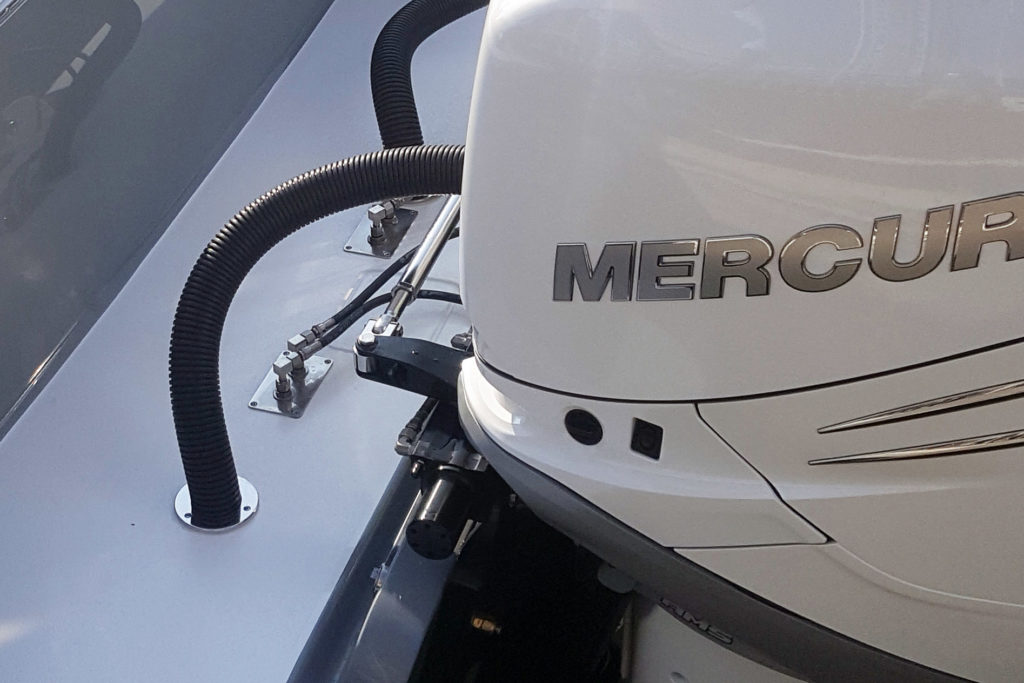
Whether it’s a new installation or time for some maintenance, knowing how to bleed a boat’s hydraulic steering system is a must.
Learning how to bleed a vessel’s hydraulic steering system is often born out of necessity. Case in point: A few years ago, I pulled my boat straight out of the slip, made a 90-degree turn by opposing the twin engines, then idled towards a dog-leg in the marina that would lead me to open water. When I reached the dog-leg, I spun the wheel to starboard and, well, nothing happened. A quick glance over the shoulder confirmed that both engines were still nearly centered. With just 30 feet between my boat and a line of pilings and bows, I threw both engines into reverse and came to a full stop—just short of my boat’s bowrail meeting the Danforth anchor perched atop a bow pulpit. I maneuvered back to the slip using the engines, only, then set about bleeding the steering system.
How to Bleed a Single Cylinder Hydraulic Steering System
This process isn’t difficult, but it does require two people because you need one at the helm and another at the steering cylinder. First, get some oil-absorbent pads ready in case any hydraulic fluid makes a mess (which is usually the case). Open the reservoir at the helm and top it off. Then connect the filler tube and oil bottle, and invert the oil bottle so the filler tube fills with hydraulic steering fluid. Poke a hole in the bottom of the inverted bottle so the fluid can freely run out of the bottle and into the system. The person at the helm needs to keep an eye on the filler tube and replace the bottle if it runs empty, to prevent introducing more air into the system.


Next, turn the wheel all the way to starboard. Then the person positioned at the cylinder should open the starboard-side bleeder valve and prepare a container to catch fluid that comes out. (It’s not a bad idea to attach a short length of hose to the bleeder valve so you can direct any fluid that comes out into a container, to minimize the mess). He or she needs to hold the cylinder in place while the person at the helm turns the wheel to port, until air bubbles cease coming out of the bleeder valve. When no more air is coming through, the valve can be closed. Now repeat the process with the portside bleeder valve.
Read More: Yacht Maintenance
How to Bleed Twin Cylinder Hydraulic Steering Systems
Simply follow this same procedure on each cylinder, one after the other. Complete each cylinder individually one at a time, rather than doing both starboard sides then both port sides.

How to Bleed Multiple Station Hydraulic Steering Systems
If your boat has two stations, you’ll need to do each one individually. The good news is that there are no additional steps in this case, either. Simply follow this exact same process at wheel number one, then do it again from wheel number two.
So, how do you know the system is fully purged? You should be able to turn the wheel smoothly from lock to lock sans bumps or hesitations. A sea trial is the best way to get a feel for how smoothly the steering system is working, but at the dock you can usually feel if there are any major air bubbles remaining.
Before you start bleeding the system, however, it’s mission critical to remember that air doesn’t just mysteriously appear in a boat’s properly functioning hydraulic steering system. If air got in there, it most likely found its way in via some sort of leak at a connection point. As a first step, it’s a good idea to check every connection point and seal, look for the telltale sign of hydraulic fluid where it doesn’t belong, and fix the leak. Fail to do so, and chances are that in a day, a week or a month, your steering will be problematic once again.









